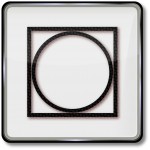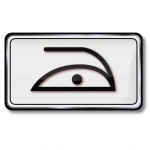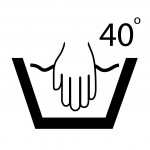Since you were a kid, you’ve been doing your laundry. It’s a task you can accomplish with your eyes practically closed. You may already feel like an expert in this field and may be asking yourself, “what more can I know about doing laundry?”
A basic how-to for doing your laundry typically goes as follows:
One: Put your clothes in the washing machine.
Two: Put your clothes in the dryer.
Three: Fold your clothes or hang them up.
Anybody who’s had to deal with musty clothes or had to re-wash clothes knows that there is more to it than that. To make sure everything goes perfectly when running your appliances, keep this article handy.
DO: Check Your Clothing Labels
The tags on your shirts and pants often contain symbols that provide directions on how you can clean the clothes and what products you can or can’t use. These strange symbols may seem like hieroglyphics or like something you see in a Led Zeppelin album, but they are easy to decode.
Some symbols indicate if your shirt can be machine washed or dry clean only. You can also determine if you want to use warm water for washing if you can use bleach on your undergarments.
The tags on your shirts and pants often contain symbols that provide directions on how you can clean the clothes and what products you can or can’t use. These strange symbols may seem like hieroglyphics or like something you see in a Led Zeppelin album, but they are easy to decode.
Some symbols indicate if your shirt can be machine washed or dry clean only. You can also determine if you want to use warm water for washing if you can use bleach on your undergarments.
Let’s take a look at a few common but very important symbols:

Tumble Dry Only: There are a few variations of the tumble dry symbol. If the circle is empty, you can dry at any heat you prefer. One dot inside the circle indicates using a low temperature only for drying, two dots means to use a normal temperature, and three dots inside the circle means you can use the high heat.

Safe to Iron: This would be a common symbol for ironing-safe clothes. You will also see this symbol with a big X over it; that means you can’t iron it at all. A few other variations will indicate whether you can steam press the clothes or at what temperature you can iron the clothes safely.

Hand Washing Only: The temperature in the upper right corner shows the most appropriate temperature to use for washing this time.

Do Not Bleach: This symbol is very common but you never want to miss this one. Bleaching clothes that shouldn’t be bleached will almost always end with the clothing being ruined. Be very careful when you use bleach with your laundry!
DON’T: Overload Your Washer While Doing Your Laundry
You may be tempted to wash all of your clothes at once to save some time. The washer basin is pretty large, so why not fill it up to the top? The reason why not is actually pretty logical; the clothes need space to move when spinning around so the soap can work its way into the fabric while also having the freedom to be rinsed thoroughly.
The clothes actually help each other get clean. Fabric rubbing against other fabric helps to dislodge the dirt and grime from in between the grain.
You’ll also waste time and defeat the purpose of washing the clothes because the detergent won’t properly wash away either. If that’s the case, you’ll end up having to run another cycle just to rinse the clothes out.
Major Risk
Most importantly, you run the risk of breaking your washing machine. The agitator is the column in the center of most washing machines, which separates your clothes during the cycle. This column can actually break from the weight and stress of an overloaded basin.
The rotating drum itself can also be thrown out of alignment and this can be a very costly repair. In some cases, fixing your washer can be more expensive than getting a new one, so don’t run the risk of fully breaking it by just trying to save some time.
The largest loads of laundry should typically fill about 3/4ths of the basin.
